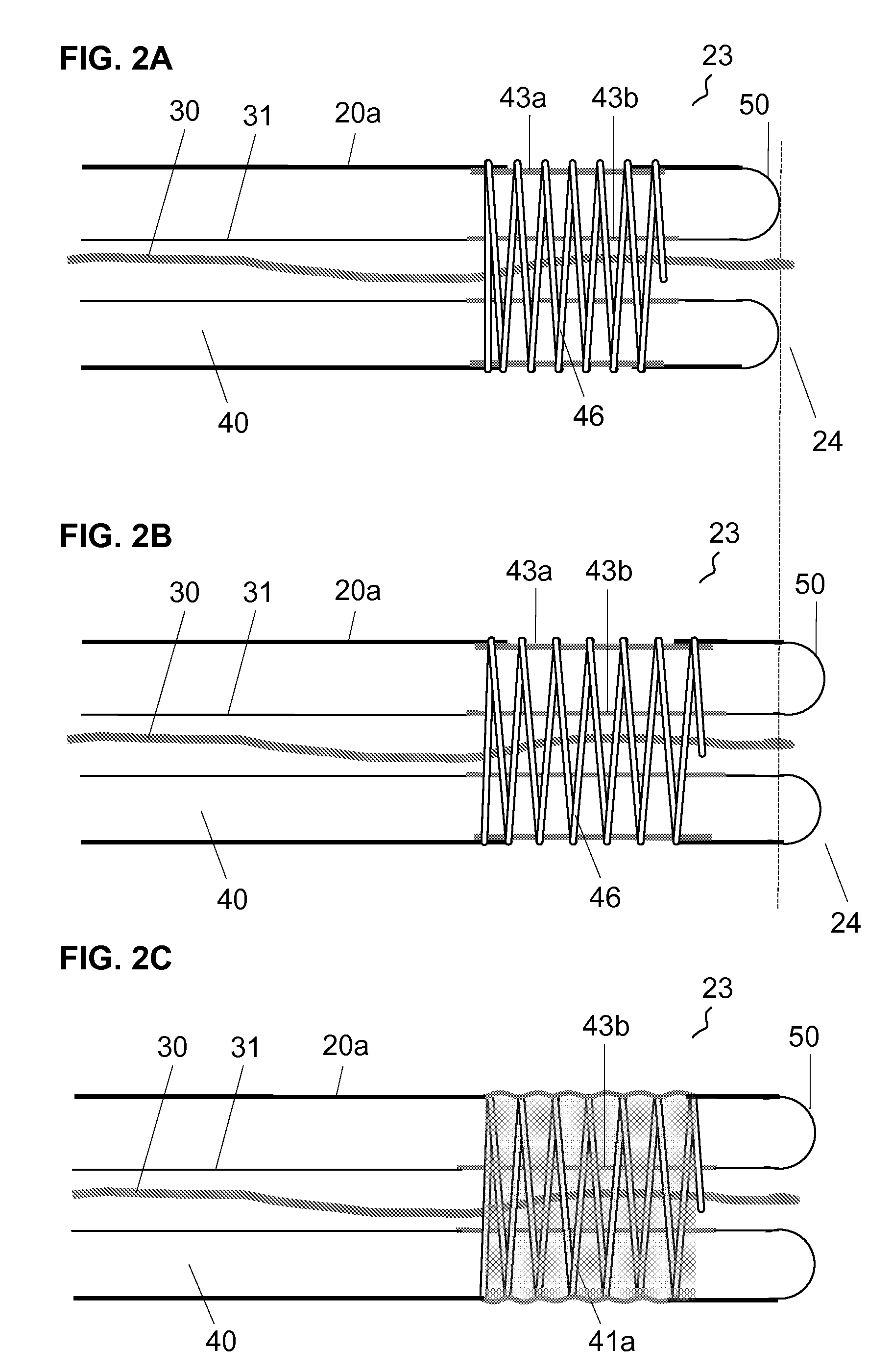Method and device for recanalization of total occlusions
a technology of total occlusion and recanalization, which is applied in the field of energy delivery systems, can solve the problems of ischemia, stroke, even death, long procedures with potentially adverse effects on patients, and perforation of the blood vessel wall
- Summary
- Abstract
- Description
- Claims
- Application Information
AI Technical Summary
Benefits of technology
Problems solved by technology
Method used
Image
Examples
Embodiment Construction
[0027]The apparatus, system and method of the invention provide an improved device and method for re-canalization of a total occlusion in a blood vessel. The device of the invention may also be applicable to clearing occlusions of other body lumens. Specifically, the apparatus of the invention is a hydraulic catheter comprising a hydraulic lumen—a sealed hydraulic system that preferably comprises a proximal element, a distal element and a hydraulic tube or pipe sealingly connecting the proximal element to the distal element—and a vibrational energy source operably connected thereto. The apparatus of the invention provides therapeutic vibration in a vibratable member located in the catheter head at the distal end of the hydraulic catheter, for example, an intravenous hydraulic catheter. The force for generating therapeutic vibration of the vibratable member is provided by the vibrational energy source, which is capable of generating at least one hydraulic pressure wave or pulse. The ...
PUM
 Login to View More
Login to View More Abstract
Description
Claims
Application Information
 Login to View More
Login to View More - R&D
- Intellectual Property
- Life Sciences
- Materials
- Tech Scout
- Unparalleled Data Quality
- Higher Quality Content
- 60% Fewer Hallucinations
Browse by: Latest US Patents, China's latest patents, Technical Efficacy Thesaurus, Application Domain, Technology Topic, Popular Technical Reports.
© 2025 PatSnap. All rights reserved.Legal|Privacy policy|Modern Slavery Act Transparency Statement|Sitemap|About US| Contact US: help@patsnap.com



